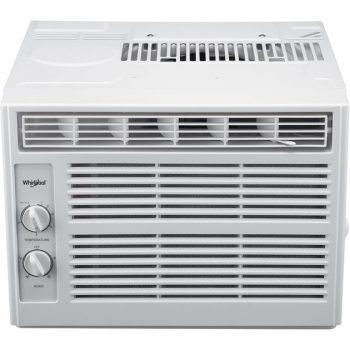
Window Air Conditioners
Window air conditioners or window rattlers as they are referred to by the trade, used to be the most widespread configuration of air conditioner. They are almost standard in apartments, houses, offices and cabins in Mediterranean countries and the Middle East. The basic ones can only chill the air, the more expensive have a heat pump mode and a remote-control. Main disadvantages of window air-conditioners are increased noise and necessity of mounting into the window opening or more usually through a narrow wall. On the plus side they are reasonably priced and easy to fit. Window air conditioners are sometimes known as ‘thro the wall air conditioners’, although they generally can not be mounted in a wall any thicker than 9″ because then the additional depth of wall impinges and blocks the air flow from the side vents of the units on the outside. Several of our customers find it much cheaper long-term to run and replace window air conditioners, that to install and maintain split systems.
Wall Mounted Air Conditioner
Wall mounted split air conditioners come a variety of styles, capacities and levels of functionality. The units are engineer fit where there is no interconnecting quick connection pipes supplied with the air conditioner, which means that the installation of the wall unit and outside condenser is bespoke to building. Although the installation of these air conditioners is quite expensive, the benefit is that the installation is neat and exact to the building which inevitably raises the building’s resale value.
There is a far greater variety of engineer fit wall mounted air conditioners on the market compared to ‘easy fit’ types, therefore a wider choice of capacities, functionality and aesthetics. Wall mounted air conditioners are typically mounted at a high level (above head height) and can come with several operating modes, including heat pump, timer functionality, remote control and air purification features.

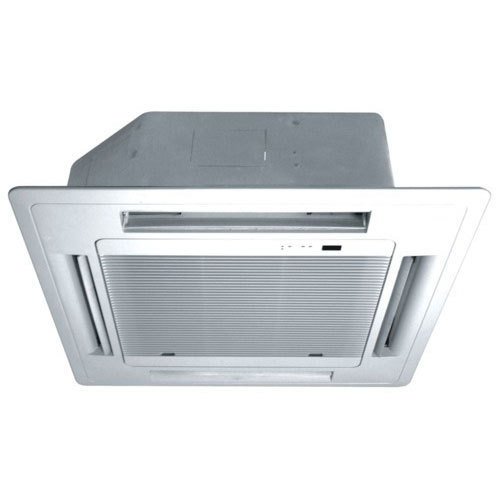
Cassette Air Conditioner
The Cassette type air conditioner is mostly installed in offices with suspended ceilings. The ceiling cassette air conditioner, sometimes known as a cartridge air conditioner, is usually manufactured to be fitted within a one or two ceiling tile spaces. The bulk of the aircon unit is unseen as it is above the ceiling line and the only visible part is the decorative lower facing with its central inlet grille and 4 edge outlet louvers. The main advantage of these units is aesthetics, but also that a centrally mounted unit can deliver an increased cooling / heating capacity across a wide area because of the air being distributed in 4 different directions. Typically, a single ceiling cassette air conditioner can do the same job as 3 or 4 wall mounted units.
Underceiling Air Conditioner
There is another type of ceiling air conditioner, which is an under ceiling air conditioner These are used where there is no suspended ceiling to install a cassette and where there is sufficient ceiling height to suspend an under ceiling unit. As these are designed to be entirely within a room, they are made to be reasonably aesthetic, however, the under ceiling air conditioners do inevitably look like overly cumbersome items to hang from a ceiling. Generally they are designed to lift air vertically into the unit and discharge treated air horizontally along the ceiling avoiding direct discharge directly onto occupants, and some allow air discharge from four sides.

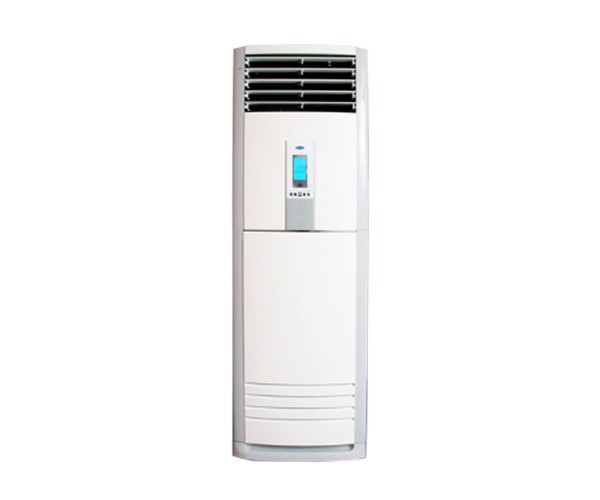
Floor Standing Air Conditioner
Floor Standing/mounted split air conditioners can really be subdivided in to two types. Firstly column air conditioners which are large, high-capacity units (up to around 45000 BTU) used where a large room is to be cooled and where there may be building reasons why several smaller outlets cannot be used. Typical applications include lobbies, reception and waiting areas. The high output of these air conditioners means that they produce a strong flow of cool air which does not allow occupants to be in close proximity to the air conditioner.
Duct Mounted Air Conditioner
Where a building has a ducted air system, duct mounted air conditioning is usually the preferred option. As the ducting is usually hidden in the ceiling voids, then so to is the duct mounted air conditioning system. Sometimes known as channel or central air-conditioners they also have the advantage of being capable of delivering conditioned air to a number of rooms, depending on the air duct layout. Because these air conditioners work within duct systems, they usually have the facility of cooling fresh air or a blend of fresh and recirculated air, depending on the layout and control of the air delivery system. This type of air conditioning is common in applications where there are a number of different rooms or zones or even separate premises to be cooled.
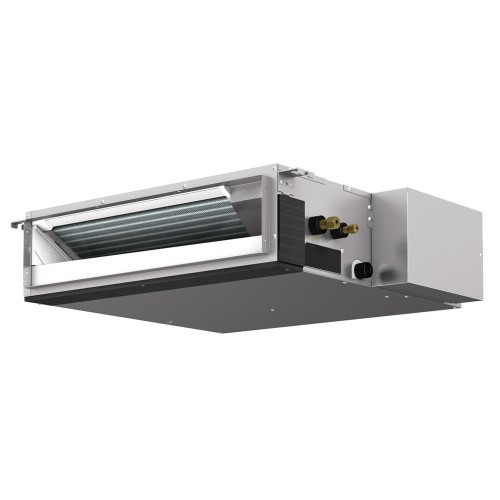
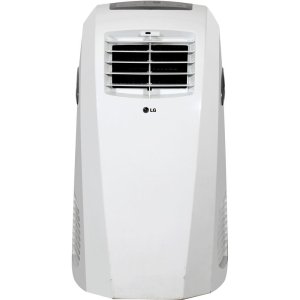
Portable or Mobile Air Conditioners
Portable split air conditioners offer the possibility or higher cooling capacity that similar size monoblocks and rated capacities for this type of air conditioner can be as high as 16000 BTU. The design typically has a plastic sheathed ‘umbilical cord’ containing the electrical line and the refrigerant pipes, one end of which will typically have a quick connect facility. This means that the connection between the two parts of the system can be broken to allow easy installation so that a pipe end rather than the complete external element can be passed through a window or hole in a wall. Mobile split air conditioners have the obvious advantage that they are easy to move and set up in a new room, although by putting the outside unit on mounting brackets and the umbilical cord through a drilled hole in the wall, these air conditioners can used for ”semi-permanent’ installation.
